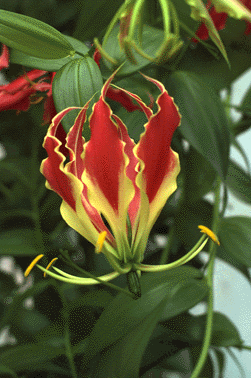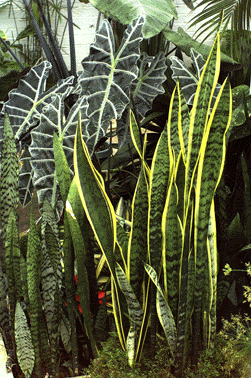Subclass Liliidae
The largest monocot subclass, with over 25000 known species of cosmopolitan distribution. Considered by taxonomists to be the most derived (ie. recently evolved) of the monocot subclasses. Most species of this subclass are insect pollinated and hence have showy, scented flowers and well developed nectaries (nectar glands). Liliidae species often have tough succulent stems to survive stressful conditions; lilies often have subterranean bulbs or rhizomes, while the orchids in the Glasshouse can be seen to have aerial 'pseudobulbs', from which new plants can develop.
 Liliaceae: Lily family
Liliaceae: Lily family
With 4000 species, has many familiar plants: lilies, tulips, onions, asparagus.
Right: Gloriosa verschurii lily.
Agavaceae: Agave family
This family includes Yucca (Joshua tree) and Dracaena (Dragon tree). These plants have stems that appear woody, but as monocots they do not have the dicot type of secondary xylem. Their woodiness is based on fibres associated with 'secondary vascular bundles'. Another familiar member of this family is Sanseviera. Below: Sanseviera trifasciata laurentii.

Orchidaceae
There is an orchid collection in the Tropical House. Click above for a selection.
